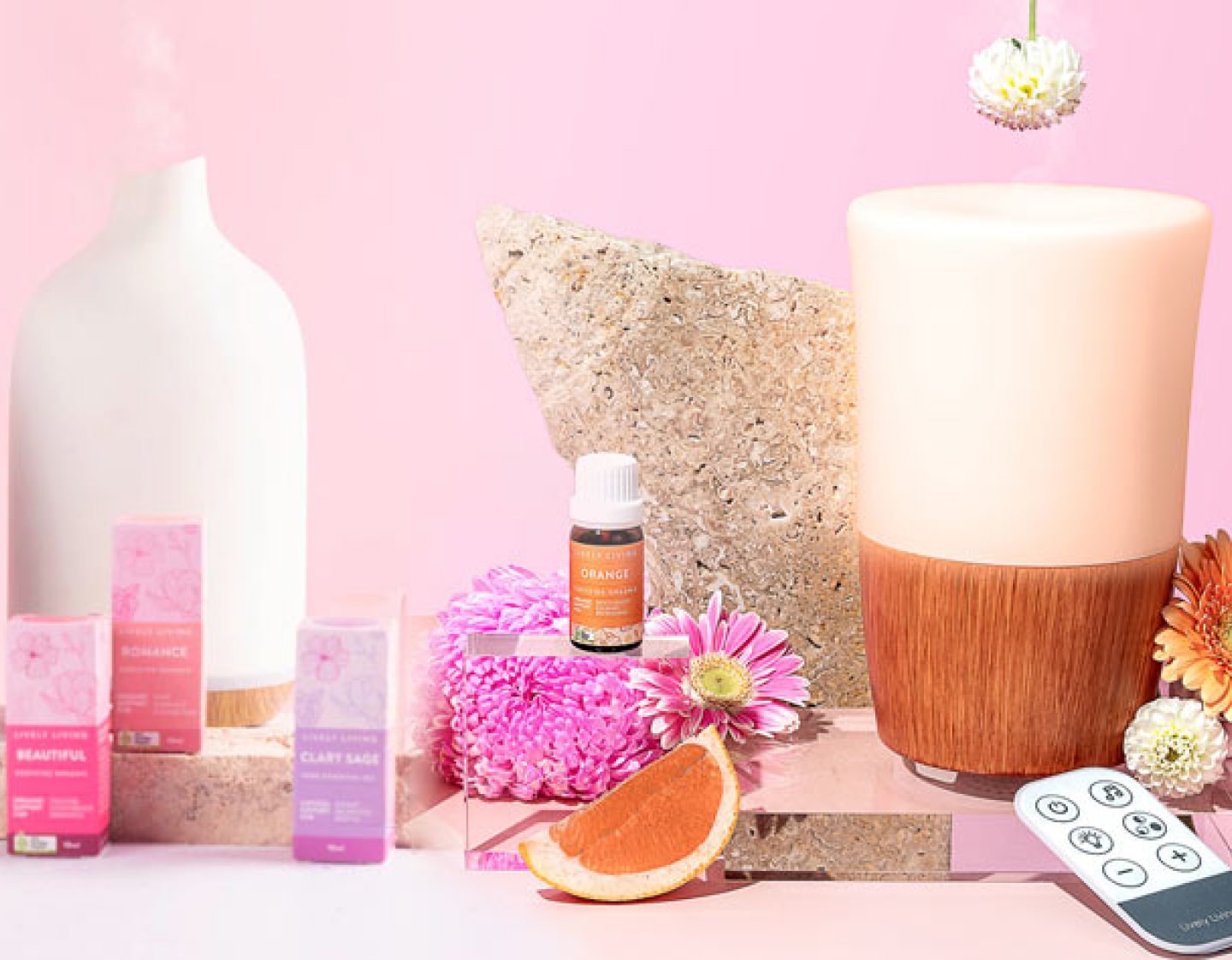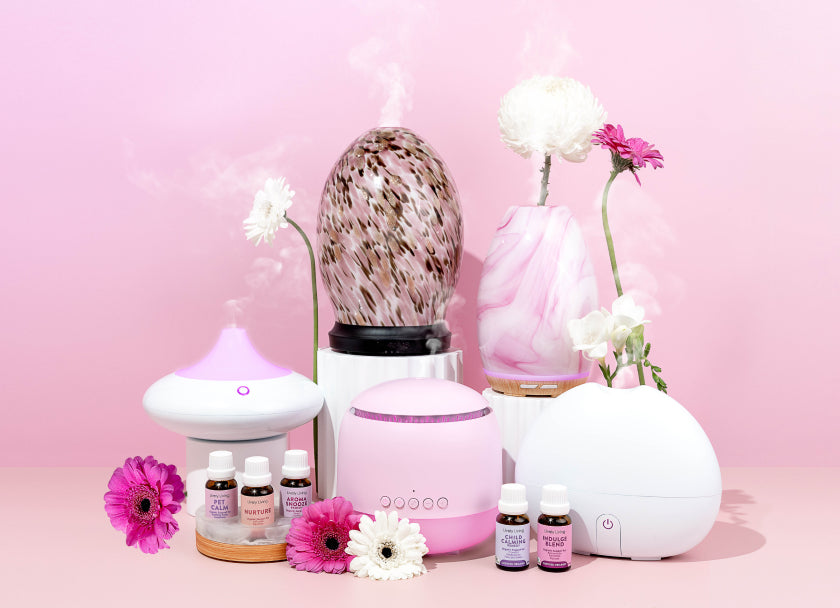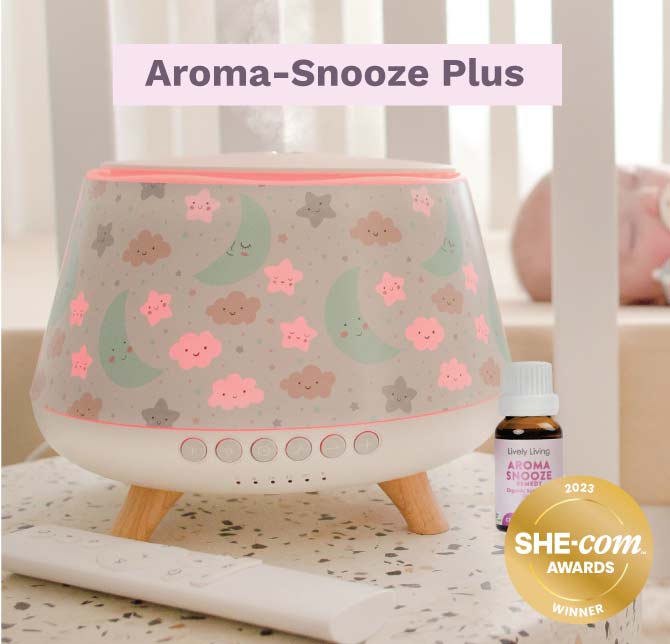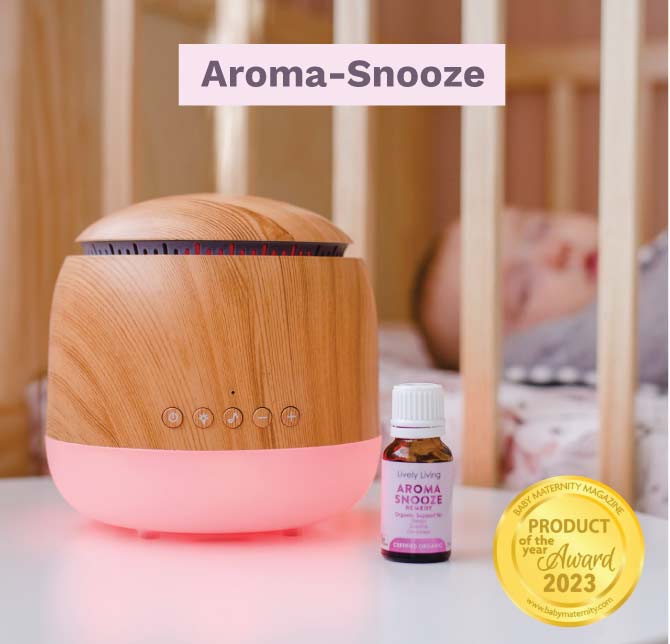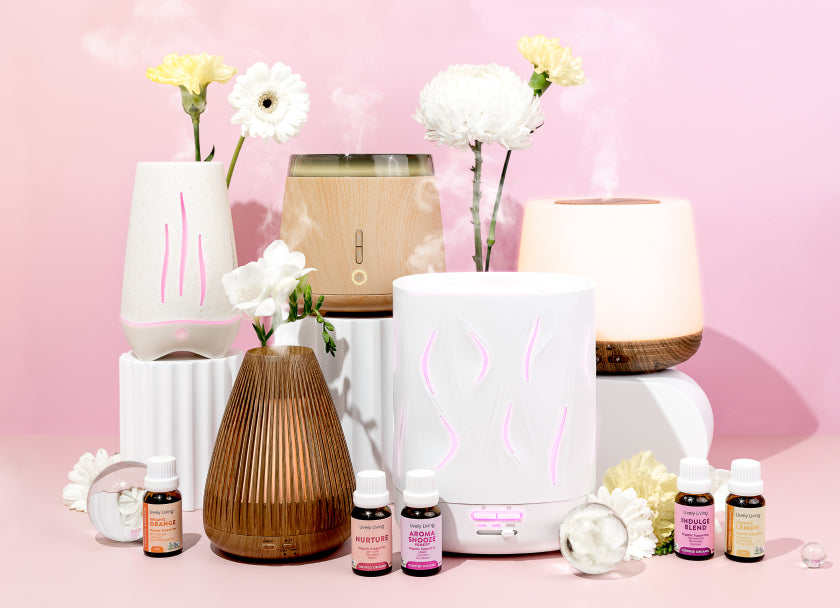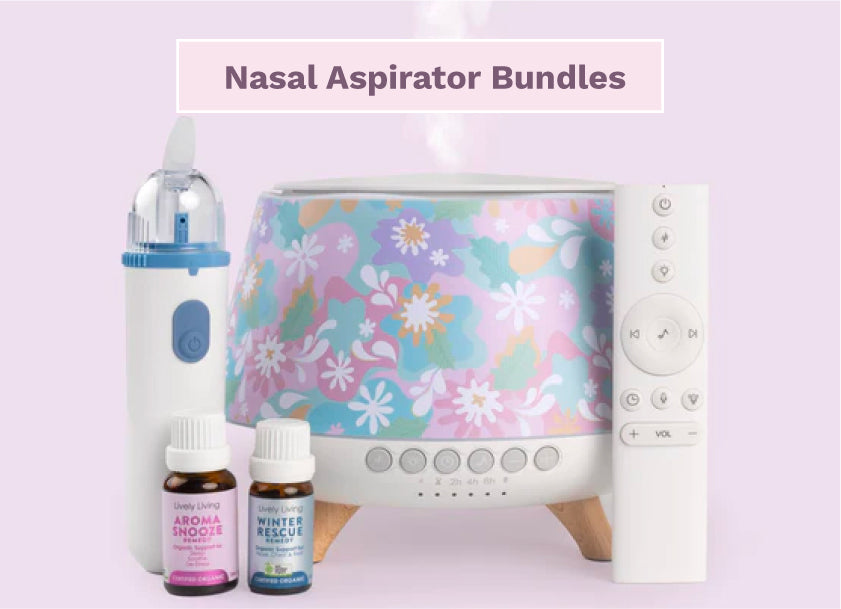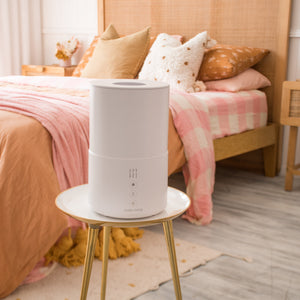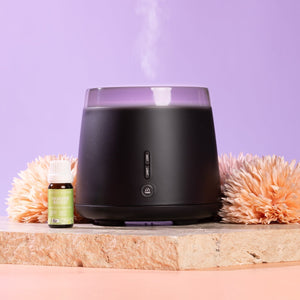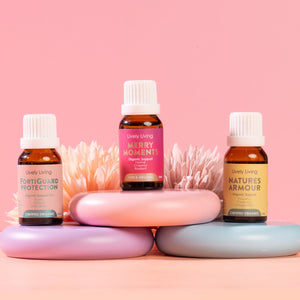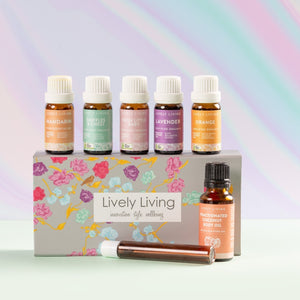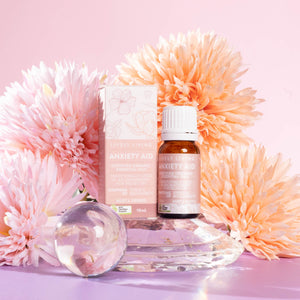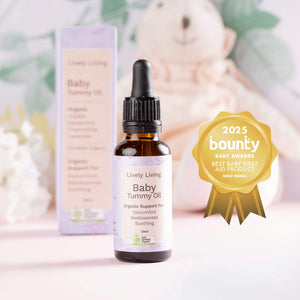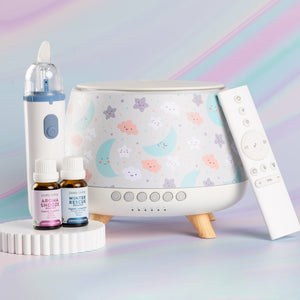Sleep Tips: Essential Oils and Wake Windows for Better Rest
When it comes to sleep tips, understanding wake windows can be a game changer. This concept is especially crucial for parents aiming to improve their baby's sleep quality. It not only helps regulate your child's sleep schedule but also prevents common sleep problems such as overtiredness.
In this post, we'll delve into the importance of identifying your child’s sleep cues and adjusting awake times according to age. We will also explore some practical tools that can assist during nap time like the Aroma-Snooze Sleep Aid Vaporiser.
Moreover, incorporating essential oils into your baby’s sleeping routine can significantly enhance their relaxation and lead them to fall asleep faster. Finally, you'll hear from real-life experiences of people who have successfully implemented these techniques and improved their children's good night’s sleep.
Table of Contents:
- Understanding Wake Windows
- Why Appropriate Wake Times Matter
- Utilizing Sleep Tools For Nap Time Assistance
- Real-Life Impact of Implementing Proper 'Wake Window' Knowledge
- FAQs in Relation to Sleep Tips
- Conclusion
Understanding Wake Windows
The concept of 'wake windows' is crucial for new parents trying to decode their baby's sleep patterns. A wake window refers to the time between sleeps when a baby is awake, including feeding and playtime. It's like their little power nap before the next snooze fest.
What are Wake Windows?
Wake windows are basically the amount of time your baby can stay awake before needing another nap or bedtime. It's like their internal clock saying, 'Hey, I need some shut-eye.' These windows change faster than a baby's diaper during the first year of life. Newborns have teeny-tiny wake windows, while older infants can party for a few hours before crashing.
Importance of Identifying Your Child's Sleep Cues
Pay attention, parents. Spotting your baby's sleep cues is key to figuring out their unique wake windows. Signs like eye rubbing, yawning, and sudden fussiness are like neon signs saying, 'Time for a nap, folks.' So, don't ignore the signals or you might end up with a cranky little one who refuses to sleep.
Remember, establishing healthy sleep habits early on means fewer nighttime wake-ups and more peaceful nights for everyone. Trust me, you'll be glad you did.
Why Appropriate Wake Times Matter
Getting the right wake times for your child can make a big difference in their sleep routine. Tired kids struggle to fall asleep on their own, so knowing when they need rest can help avoid crankiness.
The Dangers of Inappropriate Wake Times
An overtired baby is a grumpy baby. They'll have trouble napping and going to bed, leaving everyone exhausted. Blame it on those pesky wake times.
When babies stay awake longer than they should, they become overtired and have a hard time falling asleep. This means less quality sleep overall, which affects their mood and development.
Adjusting Awake Time by Age
It's all about finding the right balance. Not too little awake time, or they won't be ready for sleep. But also not too much, or they'll be overtired before they even hit the crib. Be aware of your baby's requirements and make any necessary modifications.
- Newborns (0-12 weeks): Awake windows are usually 45 minutes to 1 hour 30 minutes.
- Babies (4-6 months): Awake windows extend to 1 hour 45 minutes to 2 hours 15 minutes.
- Toddlers (18 months+): Awake windows increase to around three hours by this stage.
These guidelines can help, but remember that every child is different. No need to fret if the plan doesn't go as anticipated - aim for a schedule that fits both your and your toddler's needs, one that encourages healthy sleep habits in the long run. The goal is a flexible schedule that works for you and your little one, promoting healthy sleep habits over time.
Utilizing Sleep Tools For Nap Time Assistance
The journey to establishing a healthy sleep routine for your baby can be challenging. However, certain tools used consistently can create an ideal environment conducive to sleep at any age. One such tool is the Multi Award Winning Aroma-Snooze Sleep Aid Vaporiser.
Features Of The Aroma-Snooze Sleep Aid Vaporiser
This innovative product from Lively Living incorporates various features designed specifically to promote restful and uninterrupted sleep in babies. These include music tracks with specific frequencies known to induce calmness, an air purification function that creates a cleaner sleeping environment, and red light therapy which has been proven effective in regulating circadian rhythms.
- Music Tracks: The device comes pre-loaded with six soundtracks including pink noise, heartbeat sound, rhythmical drum beat, and three lullabies.
- Air Purification: With its built-in ionizer feature, the vaporizer releases negative ions into the air, helping purify it by removing dust particles and allergens.
- Red Light Therapy: This function emits a soothing red glow that not only serves as a nightlight but also aids in melatonin production - the hormone responsible for inducing sleepiness.
Incorporating Essential Oils Into Your Baby's Sleeping Routine
Beyond these features, what sets this device apart is its ability to diffuse essential oils effectively throughout your child's room. Essential oils are renowned for their soothing effects, making them an ideal choice to include in any bedtime regimen.
Lively Living offers a range of quality certified organic essential oils suitable even for young children like lavender oil known for promoting relaxation or chamomile oil famous for easing anxiety. Click here to explore more about our wide selection of essential oils perfect for incorporating into your baby's sleeping routine.
Taking advantage of these resources provided by Lively Living will certainly aid you on your path towards ensuring better nap times and overall improved sleep health for your little one.
Utilize the Aroma-Snooze Sleep Aid Vaporiser, a multi-award winning tool that promotes restful sleep in babies with features like calming music tracks, air purification, and red light therapy. Enhance your baby's sleeping routine by incorporating Lively Living's certified organic essential oils known for their calming properties such as lavender oil for relaxation and chamomile oil for anxiety relief. These resources will help improve nap times and overall sleep health for your little one.
Real-Life Impact of Implementing Proper 'Wake Window' Knowledge
The importance of understanding 'wake windows' becomes apparent when we hear stories from parents. These experiences offer valuable insights and show how a little knowledge can make a big difference in a baby's sleep habits.
Melissa from QLD Shares Her Experience with Lively Living
Meet Melissa, a mom from Queensland who struggled with her child's sleep routine. Getting her baby to sleep at the right times was a challenge, causing stress for both mom and baby.
But then Melissa discovered Lively Living's guide on wake windows. She started paying close attention to her baby's tiredness cues during their wake window and made sure to put them down for naps or bedtime before they got too tired.
Benefits of Adapting to Your Child's Unique Sleep Needs
- Better Sleep Patterns: Melissa noticed an immediate improvement in her baby's sleep patterns by following this strategy. Regular nap times helped regulate the circadian rhythm, leading to healthier night-time sleeps.
- Fewer Night Awakenings: With the baby no longer overtired, there were fewer instances of night awakenings, resulting in more restful nights for the whole family.
- Easier Bedtime Routine: Understanding your child's unique needs makes it easier to establish a consistent bedtime routine that works best for them. Consider using tools like the Aroma-Snooze Sleep Aid Vaporiser to enhance the bedtime experience.
In conclusion, Melissa says, 'Understanding my son's wake windows has been a game-changer. It has improved his mood and made our days much smoother.'
This experience highlights the importance of parents understanding their children's unique sleep needs and adapting accordingly. So if you're struggling with your little one's erratic sleeping habits, take note of Melissa's story and pay attention to those wake windows.
Understanding 'wake windows' is crucial for parents to establish a consistent sleep routine for their babies. Melissa's experience with Lively Living's guide on wake windows resulted in better sleep patterns, fewer night awakenings, and an easier bedtime routine, emphasizing the importance of adapting to your child's unique sleep needs.
FAQs in Relation to Sleep Tips
What are 10 tips to improve sleep?
The following are ten tips for improving your sleep: maintain a consistent sleep schedule, create a restful environment, limit daytime naps, include physical activity in your daily routine, manage worries and stress levels, avoid heavy meals close to bedtime, ensure exposure to natural light during the day, consider using an ultrasonic aromatherapy diffuser with organic essential oils from Lively Living, establish a soothing pre-sleep routine, and get regular health check-ups.
What is the 10 3 2 1 0 rule for sleep?
The '10-3-2-1-0' rule suggests: no caffeine intake within ten hours before bed, no food three hours before sleeping, no work two hours prior to bedtime, one hour without screens (TVs/computers), and zero snooze button hits in the morning. This technique can help regulate your body's internal clock.
What are tips to fall asleep?
To fall asleep faster try these methods: follow a regular sleep schedule even on weekends, make sure your bedroom is dark, quiet, and cool - use earplugs or eye shades if necessary , avoid stimulating activities near bedtime including strenuous exercise and discussing emotional issues. Also consider incorporating calming scents like lavender into your nighttime routine using an ultrasonic diffuser from Lively Living.
Conclusion
Understanding wake windows and identifying your child's sleep cues are essential sleep tips for better rest.
By recognizing when your child is tired, you can adjust their awake time according to their age, preventing overtiredness.
Utilizing sleep tools like the Aroma-Snooze Sleep Aid Vaporiser and incorporating essential oils into your baby's sleeping routine can also promote a more peaceful nap time.
Implementing these tips can lead to improved sleep for both you and your little one.

